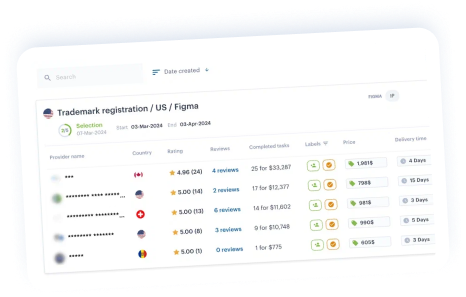Despite the growing complexity of intellectual property management, many companies — especially small and mid-sized businesses — still manage their portfolios using manual tools or Excel. At first glance, this seems like a budget-friendly approach. After all, Excel is already part of the standard office toolkit.
However, what seems free can be incredibly expensive. When you rely on memory, spreadsheets, and scattered reminders, the hidden costs quickly add up: missed deadlines, human error, inefficient collaboration, and high-stress environments. These issues don’t just waste time — they can cost you legal rights, competitive advantage, and actual revenue.
Content
1. Manual Management: Chaos, Routine, and Loss
2. Excel: The Illusion of Control
3. IPMS: Automation, Transparency, and Full Control
5. Real Losses: A Case from the Field
6. IPMS Is Simpler Than You Think
7. Conclusion: Make the Smart Move
Manual Management: Chaos, Routine, and Loss
Managing IP manually often means:
- Tracking due dates on paper or personal calendars
- Scanning email threads for filing confirmations
- Maintaining separate folders for each IP asset
- Reminders set up ad hoc, often tied to one person’s inbox
This approach may work for a handful of assets, but as your portfolio grows, so does the chaos.
Common risks of manual IP management:
- Missed deadlines for renewals or office actions can lead to the irreversible loss of IP rights.
- Human error in date tracking or document filing can result in costly legal proceedings.
- Lack of a centralized overview makes it difficult to assess your portfolio, report to management, or plan budgets accurately.
- Dependency on key individuals — if someone leaves the team, knowledge may be lost.
In a worst-case scenario, your entire IP strategy can collapse because of a calendar oversight or misplaced file.
Excel: The Illusion of Control
Excel feels like an upgrade from sticky notes and scattered emails. You can organize everything in a single sheet, sort by deadlines, assign tasks, and even share the file across departments. But Excel has serious limitations when used for IP management.
What Excel gives you:
- A centralized table of assets with statuses and dates
- Basic task assignment (if someone maintains it)
- Multi-user access (if you’re lucky with version control)
What Excel lacks:
- No automatic notifications — deadlines still rely on manual tracking
- No audit trail — no way to see who changed what and when
- No access control — confidential information can easily be overwritten or deleted
- No scaling — as your portfolio grows, spreadsheets become harder to maintain, error-prone, and overloaded
- No integration — emails, legal tasks, and document versions remain disconnected from the core table
Excel is better than nothing — but it’s not sustainable for a growing IP portfolio.
IPMS: Automation, Transparency, and Full Control
An IP Management System (IPMS) like iPNOTE is designed specifically to address the pain points of manual and Excel-based workflows. It offers a structured, automated, and secure environment to manage all aspects of your IP lifecycle.
Here’s how your workflow changes with IPMS:
- Automated reminders notify you about renewals, filing deadlines, and tasks — no manual input needed.
- All assets in one place, with linked documents, statuses, deadlines, tasks, and assigned partners or firms.
- Reports and dashboards give real-time insights into budget forecasts, upcoming renewals, country-specific risks, and more.
- Role-based access ensures sensitive data is only seen by authorized users.
- Built-in collaboration tools let you communicate with your legal team or external agents directly in the system.
Instead of chasing files and reminders, your team focuses on strategy and business growth.
Comparison Table

Real Losses: A Case from the Field
The US tech company managing their patents via Excel accidentally skipped a key renewal date in a major market. The estimated financial loss? $20,000, not including opportunity cost and re-filing fees.
After the incident, the company implemented iPNOTE. With automated reminders, central data storage, and shared task tracking, the risk of such mistakes dropped to nearly zero. The in-house team and outside counsel now work together within one system — no more guesswork, no more fire drills. Check the details here.
IPMS Is Simpler Than You Think
One of the biggest myths around switching to IPMS is that it’s difficult or expensive. In reality:
- Migration is fast: most companies transfer their data within one day.
- No IT skills required: IPMS platforms like iPNOTE are intuitive and built for non-technical users.
- Start for free: freemium plans allow you to explore the platform with no upfront cost.
The learning curve is minimal — and the benefits are immediate. Check the guide here.
Conclusion: Make the Smart Move
If you’re still using Excel or manual methods to manage your intellectual property, you’re not in control — you’re exposed to avoidable risks. Time, money, and peace of mind are too valuable to lose over outdated tools.
It’s time to switch to a better way.
Try iPNOTE for free or Book a demo with our IP experts. See the difference a real IPMS can make
Take control of your IP—before it controls you.






